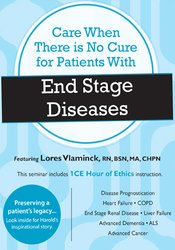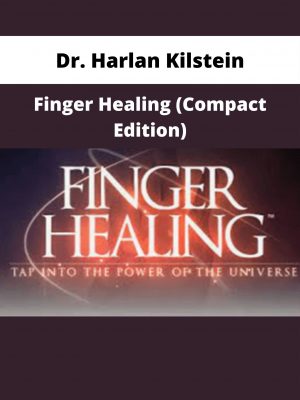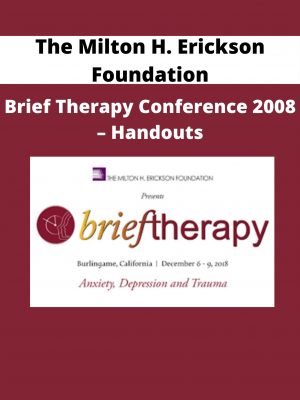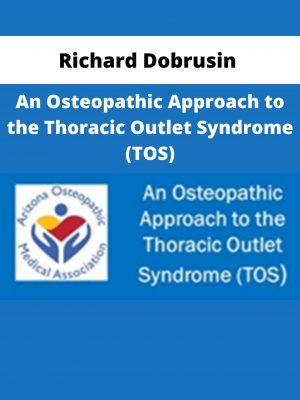Lores Vlaminck – Care When There is No Cure for Patients with End Stage Diseases
$219 Original price was: $219.$62Current price is: $62.
Shopping Instructions:
- DISCOUNT 15% : SHOP15
- Product Delivery: Within 1 – 12 hours after purchase.
What can we do for patients with COPD who’s seemingly only solution for an exacerbation is a visit to the ER? We have an intervention for this.
Lores Vlaminck – Care When There is No Cure for Patients with End Stage Diseases
Disease Prognostication: An Inexact Art & Science
- Individualized care: The importance of prognosis (science/art/intuition)
- Determining palliative care vs. hospice care
- Crucial conversations
- The hospice benefit
Congestive Heart Failure: The Broken Heart
- Best practice: The Seattle HF Model
- Medication management strategies
- Symptom management and pain management
- Pacemakers, ICDs & LVADs – Living better or prolonging suffering?
Chronic Obstructive Lung Disease
- Global Obstructive Lung Disease (GOLD) Guidelines
- The COPD Assessment Test (CAT)
- Treating dyspnea: “The Pain of Non-Malignant Disease”
- The medication tool box: Oxygen, bronchodilators, opioids and steroids
Renal Disease
- Appropriate use of dialysis
- Staging disease with Glomerular Filtration Rate
- Hemodialysis mortality predictor
- Symptom burden
- Underutilization of hospice
- Opiods with dialysis
Liver Disease
- Indicators of poor prognosis
- Differentiating when cirrhosis is the cause
- Most useful analgesics for the pain
- Waiting for transplant while on hospice: Use of the MELD tool
Advanced Dementia
- GDS: FAST
- Pain scales
- Feeding tube dilemmas – and outcomes
- Delirium and dementia: Interventions for agitation and aggression
- End state dementia
Amyotrophic Lateral Sclerosis
- Diagnostic tests for ALS
- Advance directives and life support decisions
- Nutrition and gastrostomy
- Non–invasive ventilation
- Table of useful medications and palliative measures
Advanced Cancer
- The value of early palliative care
- Spiritual needs
- Complications and interventions
- Spinal cord compression
- Superior vena cava syndrome
- Bowel obstruction
- Hypercalcemia
- Fungating wound/terminal Kennedy ulcer
Eight Signs of Impending Death
Challenging Decisions
- What do people want at the end of life?
- Delirium vs. near death awareness
- Mental health needs of the dying
- Palliative sedation therapy for intractable symptoms
- Does the dying person need hydration? Oxygen? Treatment for rales?
Moral Distress
- Uncomfortable patient/family scenarios
- Ethical dilemmas
- Medication errors
- Conflicted consciences
Would you like to receive Lores Vlaminck – Care When There is No Cure for Patients with End Stage Diseases ?
Description:
Preserving a patient’s legacy – Harold’s story…
Harold was a patient with metastatic bowel cancer – he had just months to live. Over his lifetime, he had been instrumental in transforming acres of farmland into the village that he grew to love. This legacy was extremely important to Harold. In an effort to keep this heritage alive, he had large posters made of photos, and he even used his carpentry skills to create an entire model of the town. Upon hospice visits, his only focus was teaching his caregivers about this legacy; he did not want it lost with his death.
His caregivers began videotaping him sharing the story of his village – but that wasn’t enough for Harold. With his permission, a local TV station was brought in, focusing on the model, photos, and the stories behind them. The TV personnel never mentioned that Harold was ill. The video aired on the local station, and Harold was ecstatic – and at peace. He passed away soon after, his legacy preserved.
In this compelling recording, multiple case studies like Harold’s will provide you with examples that you can incorporate when caring for the terminally ill. Caring for patients with end stage disease requires extreme sensitivity, deep compassion, and extraordinary knowledge. In order to deliver expert, holistic care, healthcare professionals need to have a toolbox full of new interventions to promote quality of life.
Each particular end stage disease has unique complexities for the patient, the family, and the healthcare professional – and this recording will cover specific strategies for caring for these patients.
Did you know that a patient seeking a liver transplant can be on hospice care while waiting? We will discuss how this is done.
What can we do for patients with COPD who’s seemingly only solution for an exacerbation is a visit to the ER? We have an intervention for this.
How can we keep costs down without sacrificing patient care? We’ll give you the latest strategies, proven successful in practice.
It’s time to think outside the box.
Walk away from this recording with new tools for quality support – and care when there is no cure.
Here’s What You’ll Get in Lores Vlaminck – Care When There is No Cure for Patients with End Stage Diseases
Lores Vlaminck – Care When There is No Cure for Patients with End Stage Diseases : Sample
Related products
HEALTH & MEDICAL
Dr Heidi M Crocker – Yoga Alignment | Speaker: Heidi Crocker EdD, DC
HEALTH & MEDICAL
HEALTH & MEDICAL
HEALTH & MEDICAL
Dr. J.E. Williams & Kevin Gianni – How to Read Your Blood Tests
HEALTH & MEDICAL













